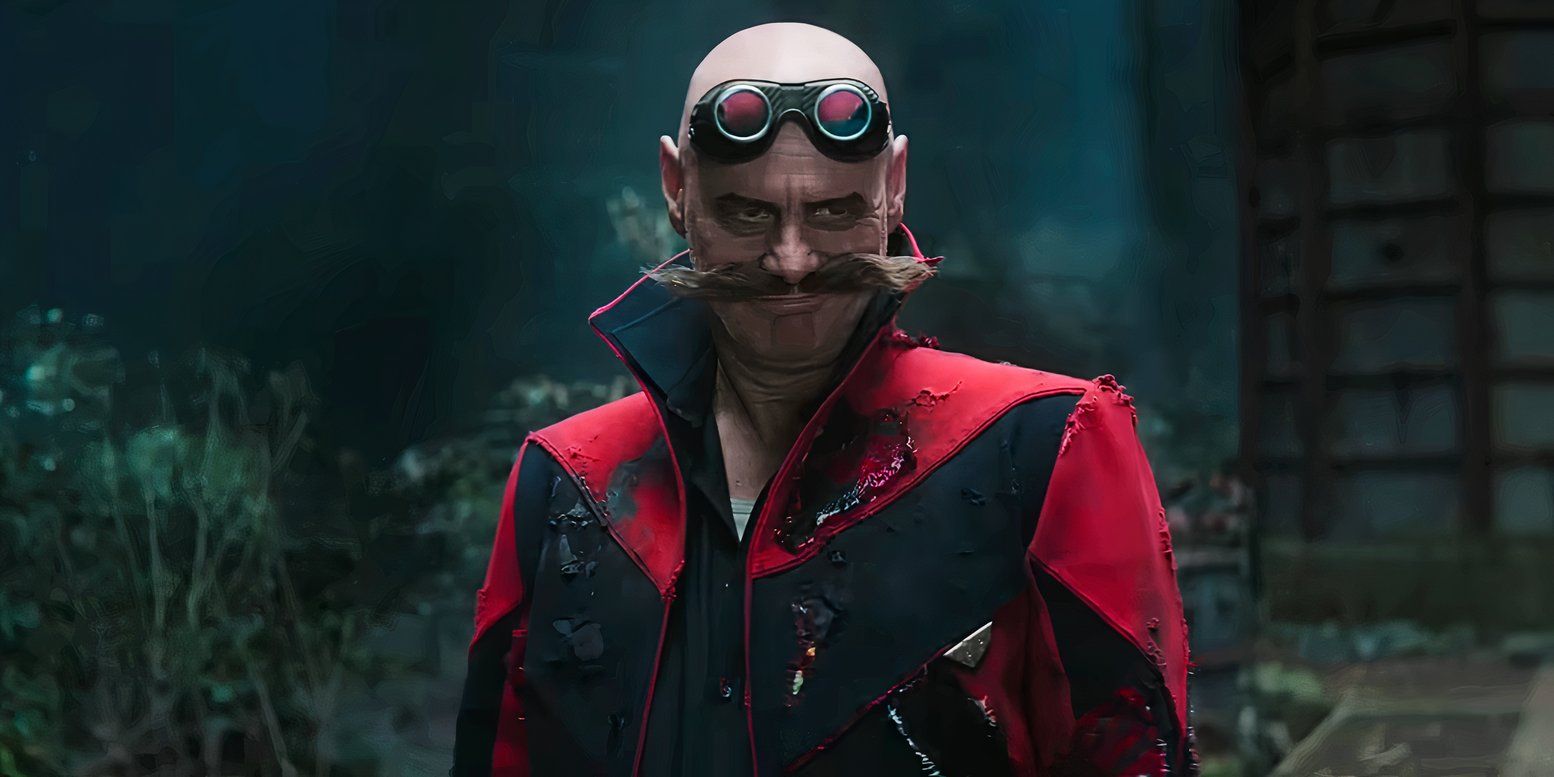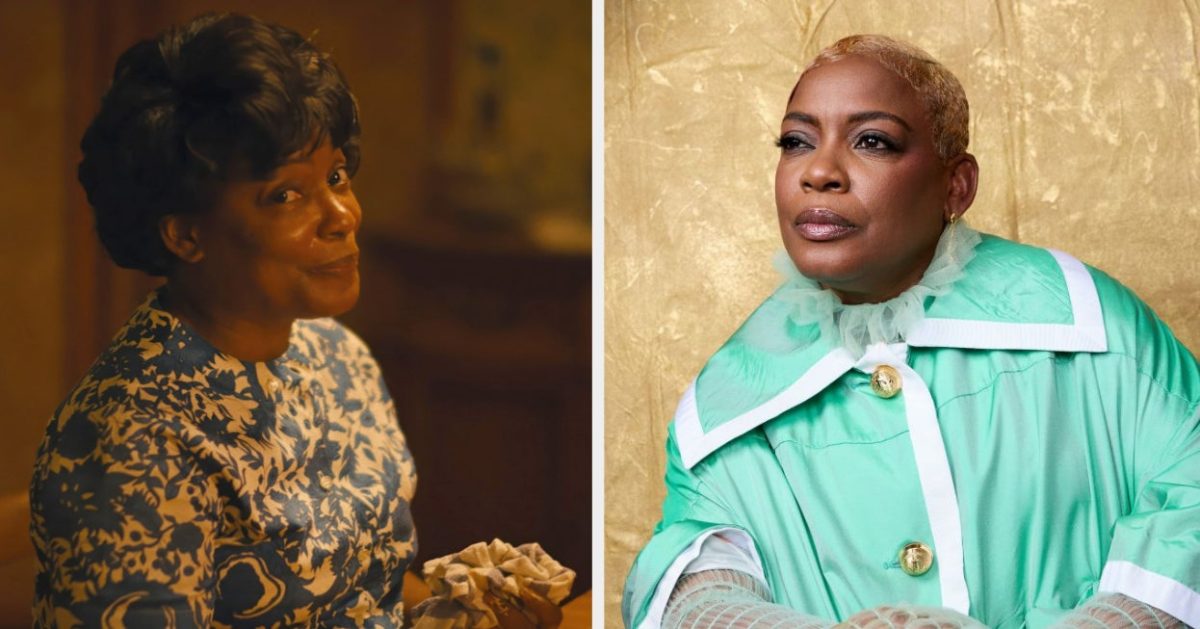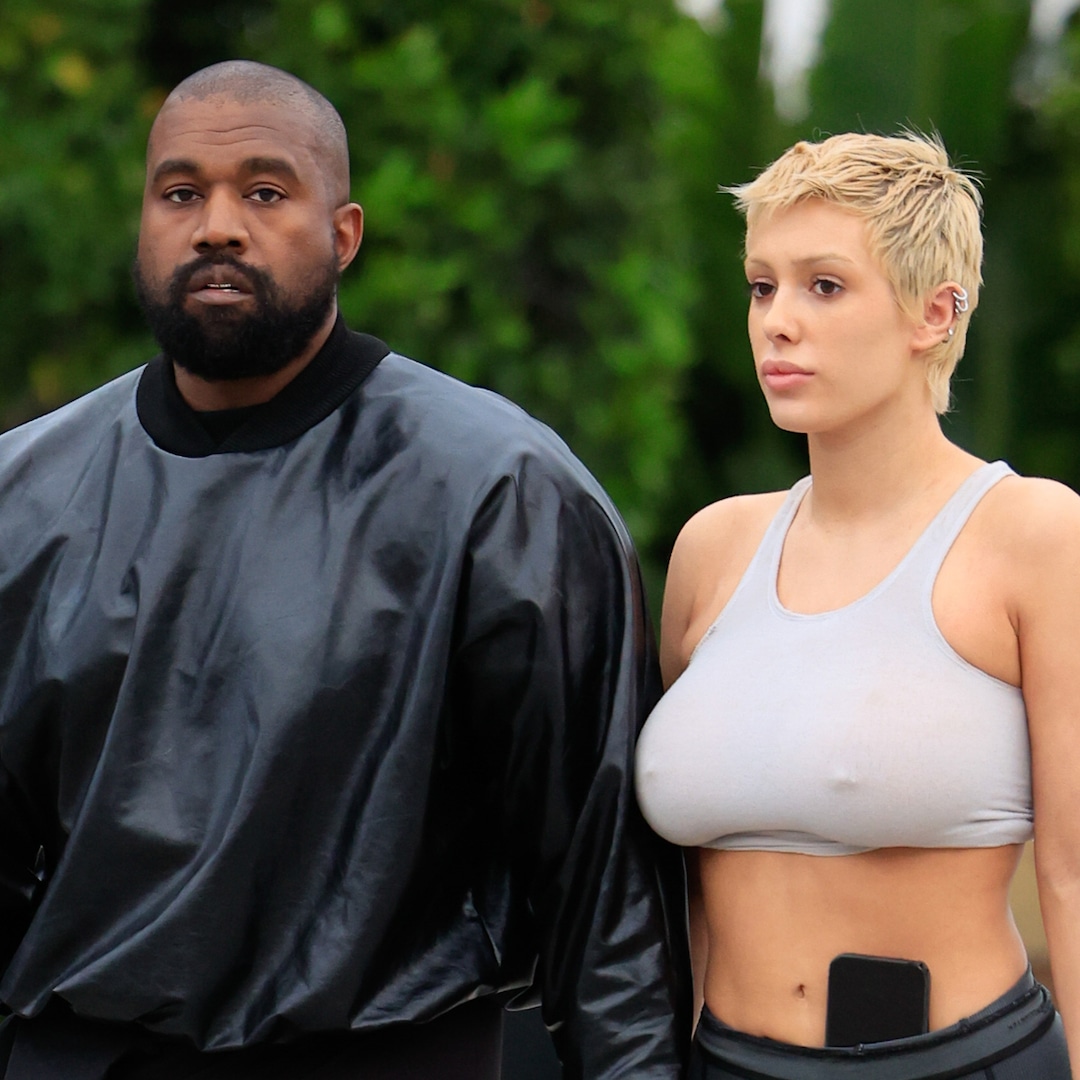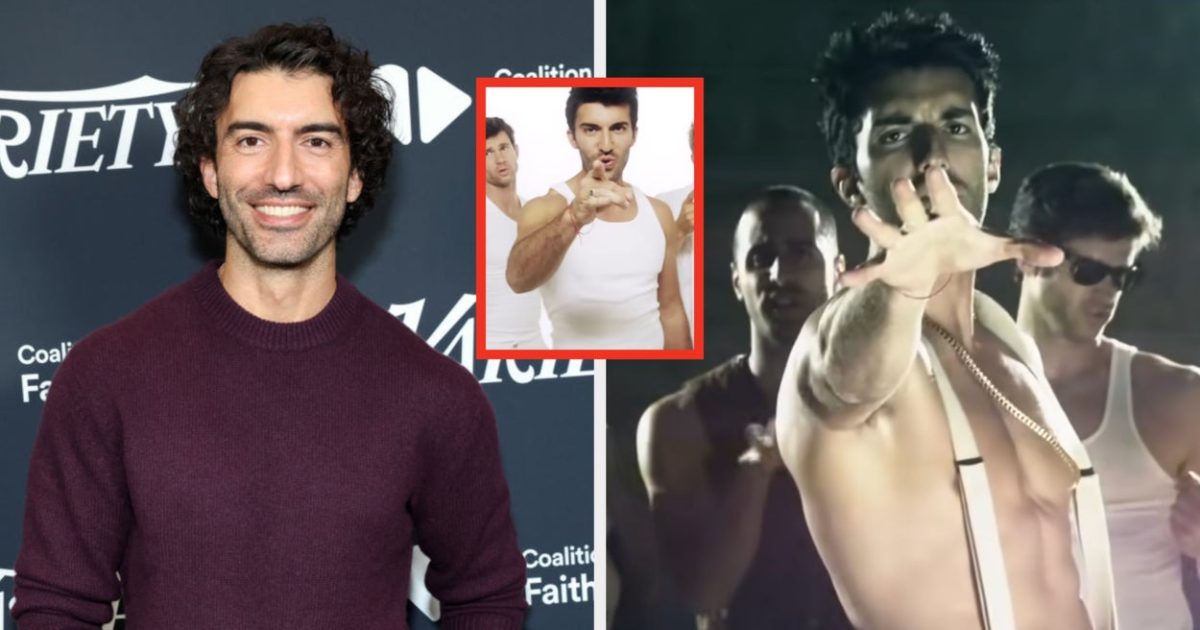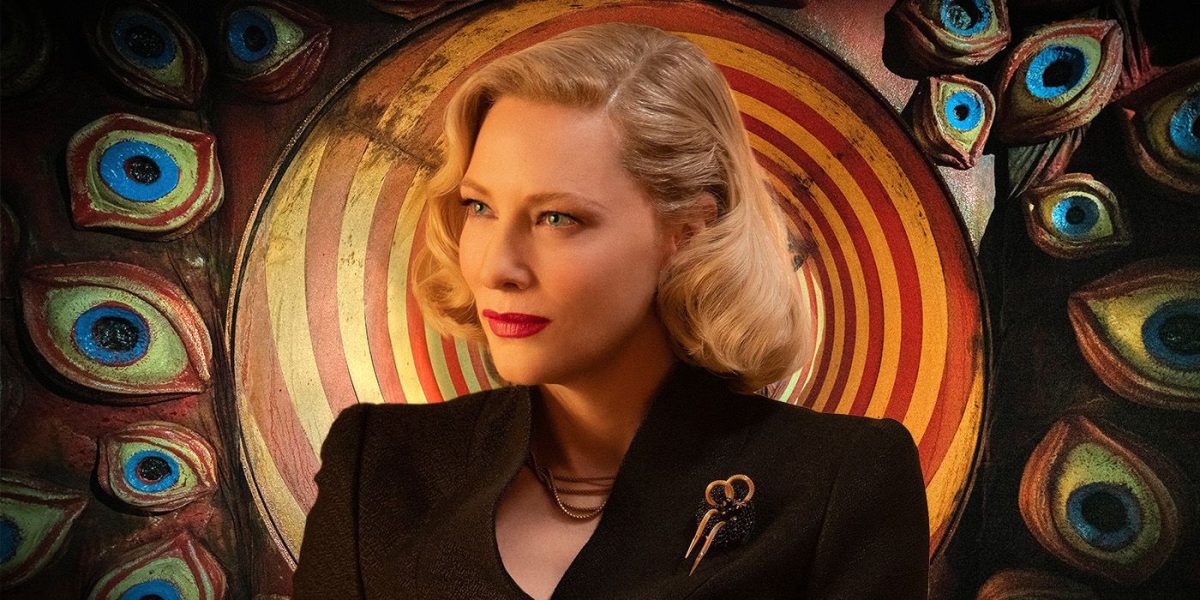
This Psychological Thriller From Guillermo del Toro Doubles as a Neo-Noir Gem
Jul 24, 2024
The Big Picture
Nightmare Alley
presents a hallucinatory neo-noir facade, exposing human arrogance and vanity through a rusty mirror of warnings and truths.
Female characters play complex roles, symbolizing humility and pride, while the public’s ego is deconstructed by mentalism performances.
The carnival setting in
Nightmare Alley
toys with our vanity, showing how pride blinds us from basic truths and morality, leading to devastating consequences.
Though grimy scales or monstrous wings do not pervade Nightmare Alley, Guillermo del Torro still instills a hallucinatory and fantastical facade in this underrated neo-noir masterpiece. Walking among the unruly society of carnies that exclusively deals in illusions, the film itself taps into a bitter truth of the human condition, exposing an arrogance that is inherent in everyone. From Bradley Cooper’s Stanton to even the extras in the background, everyone in Nightmare Alley believes that they are exempt from the everyday reality of everyday people – we all believe we are “special.” The neo-noir holds a rusty mirror up to our psyche, preying on our egos and revealing inconsolable nihilistic truths that whittle our self-image down through a series of warnings, whimsies and flourishes. Forced to remove our blindfolds of vanity, we are left scouring through the ashes for the faculties that protected us from believing we truly are insignificant.
Nightmare Alley Based on the 1946 novel of the same name, Nightmare Alley follows drifter Stan Carlisle (Bradley Cooper) as he joins a carnival in order to learn the art of grifting. Addicted to the thrills and the potential for personal gain, Stan takes his show on the road accompanied by fellow carnival worker Molly (Rooney Mara), where he makes a living as a false medium and mentalist. Stan is soon drawn into a much darker web of opportunity that sees him risk it all for one big score.Release Date December 17, 2021 Director Guillermo del Toro Runtime 150 minutes Main Genre Drama Writers William Lindsay Gresham , Kim Morgan , Guillermo del Toro Studio Searchlight Pictures Expand
‘Nightmare Alley’ Is a Nihilistic Exploration Into Pride
Like a true neo-noir, Nightmare Alley revels in a morality that is frayed around the edges, coupled with a morbid landscape that is traversed by an ambitious protagonist. Introduced in a fiery montage of burying a body, Stanton isn’t your typical wide-eyed young man who traipses into a carnival and lands on an opportunity for success. He is grounded with cynicism, open to manual labor in order to escape his past, though is eventually whisked away by infatuation and a budding talent in mentalism. As he leaves the grimy tents and chicken-biting geeks behind with his hand firmly clasped in Molly’s (Rooney Mara), his newfound vanity deafens him from the ominous warning that should have been ringing in his ears: “Don’t do the spook show.”
Cooper skillfully commands the screen whenever he performs a spook show as Stanton, adopting a soothing voice and a delicate demeanor that effectively manipulates the “mark” and subsequently bolsters his arrogance. Nightmare Alley becomes an archaic tale of rags-to-riches-to-rags, where overachieving becomes the protagonist’s downfall as he flirts with sin. Aside from the ethical insinuations, Stanton’s ambition also causes him to believe he is infallible, immune to the mundane mistakes or oversights any normal person could make. Conning the over-zealous and paranoid Ezra Grindle (Richard Jenkins) was never a sane idea, nor was trusting Lilith Ritter (Cate Blanchett), a doctor who specialized in psychology and manipulation. He becomes blind to the overarching powers at play, quickly forgetting his initial cynicism and low-status roots, subsequently believing his clamber up the ladder of wealth had actually yielded him a sort of indestructible power.
Stanton becomes the most overt example in Nightmare Alley of arrogance blinding humans to simple truths. Because the reality was, he had no business drenching himself in this much deception, from spook shows to meddling in the lives of the elite. With little experience of the nuanced political powers at play, his ego disallowed him to recognize how out of his depth he was. This film never questions his rise to notoriety, it is his ignorance of his limits (whether that be intrinsic or extrinsically placed on him) that Nightmare Alley ultimately exposes and punishes. Ritter was never the villain, Stanton’s ego was.
Female Characters Play Conflicting Archetypes in ‘Nightmare Alley’
Image via Searchlight
Female characters in Nightmare Alley play a more deliciously complex role in this existential commentary. Stanton’s spiral into his pride also translates to his relationship with Molly as he gradually distances himself from her. As the one person that connects him to his past, or humble roots, her presence essentially keeps him grounded after the time jump. However, as he disconnects with her and ventures further into the world of spook shows, he slowly loses touch with reality – that is, he becomes more consumed by his ambitions and forgets the everyday powers at play. As such, in relation to Stanton, Molly’s character becomes symbolic of humility and grounding reality, essentially embodying the antithesis of the pride that leads him astray.
However, Molly isn’t necessarily reduced to an archetype of virtue like one would expect from a female character. In fact, she ends up also being a victim to her own ego, continuously holding out for Stanton and believing she could reel him in if he got too carried away. Enveloped by her fantasies of true love, she is unable to reconcile his true nature and obsession with his ambition to the endearing husband she had envisioned after running away with him. However, her ending is far more hopeful than Stanton’s jarring one, as she eventually acknowledges that basic human motivations cannot win over her dreams, reclaiming her life by briskly walking away into the darkness of an alley and never once looking back.
Related John Wayne’s Surprising Influence on Guillermo del Toro’s ‘Pacific Rim’ The iconic Western film star was surprisingly important in bringing del Toro’s earthshaking Jaegers to life.
Though Ritter seamlessly fits the female archetype of a femme fatale, she is also conflicting in her role. She effortlessly exerts manipulation and seduction, becoming one of the more powerful players in this nightmarish chessboard, yet is also victim to her pride, as her final line may come off as victorious but is also tinged with nihilism. As another scar is added to her collection, and she grasps her neck through labored breathing, Ritter hoarsely whispers “I’ll live” to her security guard. While she may have exacted her revenge on Grindle for causing her first scar, her finale sees her with another one to tend to, completely alone in an office, with the only reward of living. Ritter’s “I’ll live” becomes symbolic of how life continues on, and her pursuit of vengeance simply becomes another blemish in the grand scheme of things. With her ego fueling this pursuit, alongside her confidence in manipulating Stanton, she becomes blinded to the personal costs and consequences this vengeance would result in.
‘Nightmare Alley’ Exposes the Ego of the Everyday Person
But Nightmare Alley isn’t simply a character study on the sin of pride. This existential thread of “no one is special” extends beyond the few main characters and trickles down to the public. The nature of mentalism itself is particularly damning, as the complex emotions of a human’s lived experience can be strategically extracted by someone who is skilled at reading body language, material cues and vocal intonations. A mentalist’s performance is also based on a series of summations and seemingly universal truths, as Stanton quickly learns that if his mark is older, they are likely to have experienced a loss recently, or that almost everyone would have had some sort of childhood issues with their parents. Our arrogance is quickly deconstructed, as the performance exposes our belief that our experiences are unique to us. While to some capacity this may be true, many profound experiences in our lives can actually just be painfully arbitrary.
As our dynamic world view is diminished into simple, reductive truths, the performative aspect of Stanton’s mentalism becomes particularly jarring. Brandishing his arms around and donning a blindfold, his act of grandeur and whimsy caters to our pride, promising us that he is indeed extracting an intriguing and elusive aspect of our character. But this is starkly contrasted to the almost indifferent and mathematical way he breaks down the gears of his act to Ritter, disclosing the tools he uses and the cues he reads. The illusory element of mentalism directly reflects and targets our delusions of individuality, also inherent in Stanton’s storyline. We set out into the world believing we are “the chosen ones,” shaped by our experiences and guaranteed to find success, only to discover that we are humans – capable of greatness and vulnerable to “geekdom”.
Everyone Is a Victim of Arrogance in ‘Nightmare Alley’
Veering away from total existential dread, the carnival itself is also a setting that becomes instrumental in toying with our ego. In the wise words of carnival boss Clem Hoadley (Willem Dafoe): “folks will pay good money just to make themselves feel better.” Visiting a carnival generally involves escaping one’s humdrum life to indulge in perverse and fantastical sights without facing the repercussions of being labeled as immoral. Mysticism and morality in Nightmare Alley are inherently intertwined in the act of visiting a carnival, but our vanity also plays a role in this. Guests believe they can walk away from watching a geek bite off a chicken head or an immodestly dressed woman get electrocuted, with their morals intact and unscathed. However, it is their pride that drives this hypocritical belief and lack of accountability for their perversions, emphasizing the strength of vanity and how it blinds us from basic revelations.
Being enchanted by what was considered “unnatural” back in the day also creeps into the public’s compulsion with spook shows. Stanton’s stints with the Kimball family and Grindle elucidate a nuanced sort of pride, where the marks believed they could transcend the religious moral order of the time to speak with the dead, only to result in devastating consequences. Following the destructive aftermath of World War I, set during the Great Depression, and just before the Second World War, the time was ripe for egos and fantasies to overtake the overbearing and solemn reality coursing down cobbled streets. Ironically, while vanity spells doom for many of these characters, it gives hope to others, saving them from the bitter realities of the human condition. Nightmare Alley preys on the egos of everyone involved, using lavish illusions to dig into darker truths of vanity we are content to remain ignorant of.
‘Nightmare Alley’ Has One Major Difference From Guillermo del Toro’s Other Films
What makes Nightmare Alley such a compelling watch is how it stands out from the rest of del Toro’s filmography, especially regarding a certain element – or the lack of it. Most of del Toro’s films have a supernatural element: Hellboy has a protagonist who literally came from the depths of hell, Crimson Peak features ghosts (and a seriously twisted sibling relationship), The Shape of Water centered on the relationship between a deaf woman and a mysterious aquatic being. Nightmare Alley doesn’t feature any of that, as Stanton quickly learns how to trick people into thinking he’s psychic while also tricking them out of their money. Even a disturbingly preserved specimen in Hoadley’s office has an all too human explanation: it’s a stillborn baby. The real horror comes from how everyone – Stanton and Ritter especially – is willing to exploit others to get what they want.
Even if it was a departure from his usual fare, del Toro had wanted to make Nightmare Alley after watching Tyrone Power’s original film, as well as receiving a copy of the original novel from his frequent co-collaborator Ron Perlman. “My adaptation that I’ve done with [co-writer] Kim Morgan is not necessarily – the entire book is impossible, it’s a saga. But there are elements that are darker in the book, and it’s the first chance I have – in my short films, I wanted to do noir. It was horror and noir. And now is the first chance I have to do a real underbelly of society type of movie. [There are] no supernatural elements. Just a straight, really dark story,” he told Collider. Nightmare Alleys serves as a unique entry in del Toro’s filmography, proving that he can step out of his wheelhouse when it comes to genre.
Nightmare Alley is currently available to stream on Fubo in the U.S.
WATCH ON FUBO
Publisher: Source link
Aunjanue Ellis-Taylor Talks Black Trauma, Nickel Boys
That's beautiful and so refreshing to hear. I’ve seen discourse online with sentiments of “Black films always have to have some type of trauma. Why can’t our characters just be happy?” What are your thoughts on that line of thinking?…
Jan 3, 2025
Kanye West Shares Rare Photo With Wife Bianca Censori
Kanye West and Bianca Censori are looking stronger than ever. The "Heartless" singer shared several rare photos of the pair to his Instagram Story Jan. 2, giving fans a glimpse into their private life. In the photos, Kanye, 47, can be seen snapping pics in…
Jan 3, 2025
"You Can Tell Everything About A Man By The Way He Proposes": If You Never Saw Justin Baldoni's 27-Minute Proposal Video, Here's Why It Is Now Being Called The "Red" Flag Everyone Missed
The video is recirculating with millions of views and new opinions.View Entire Post › Disclaimer: This story is auto-aggregated by a computer program and has not been created or edited by filmibee.Publisher: Source link
Jan 2, 2025
Diplo Admits He’s “Tripping” on LSD During CNN New Year’s Eve Show
Diplo ended 2024 on a high—literally. Indeed, the DJ admitted to Andy Cohen and Anderson Cooper that he was tripping into the new year. “I’m so curious,” Andy told Diplo on CNN’s New Year’s Eve Live with Andy Cohen & Anderson…
Jan 2, 2025



